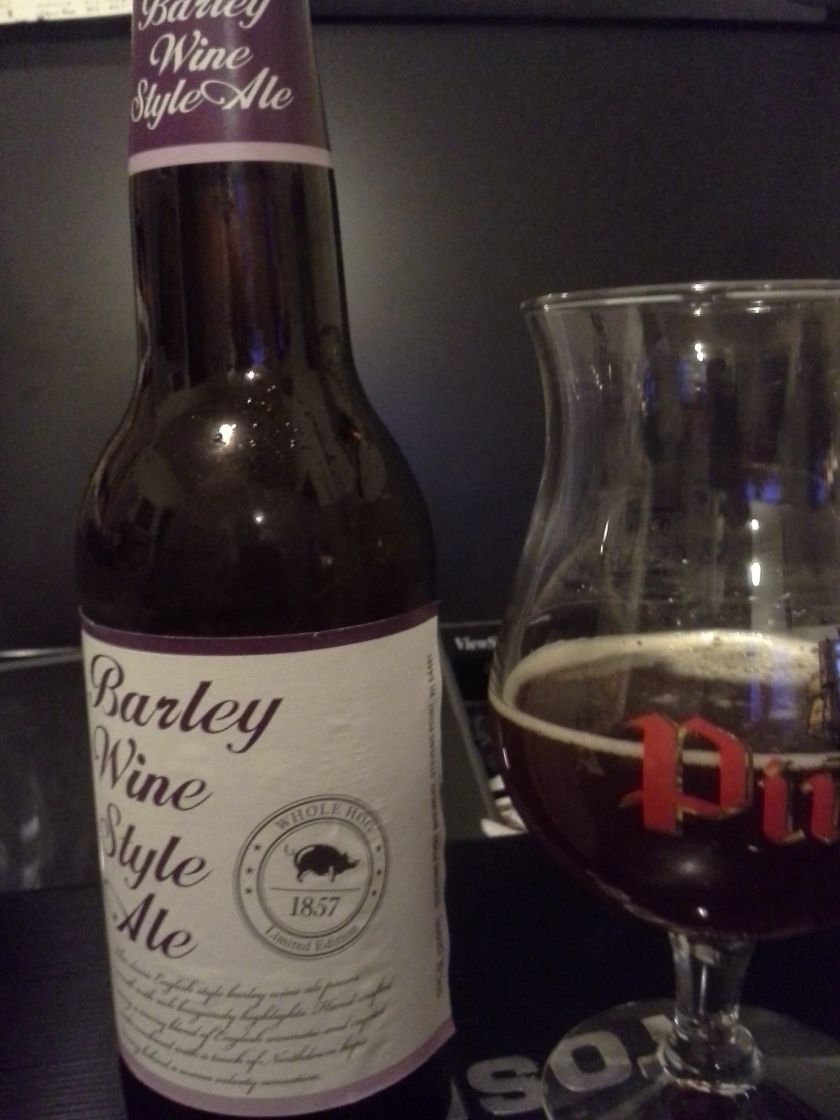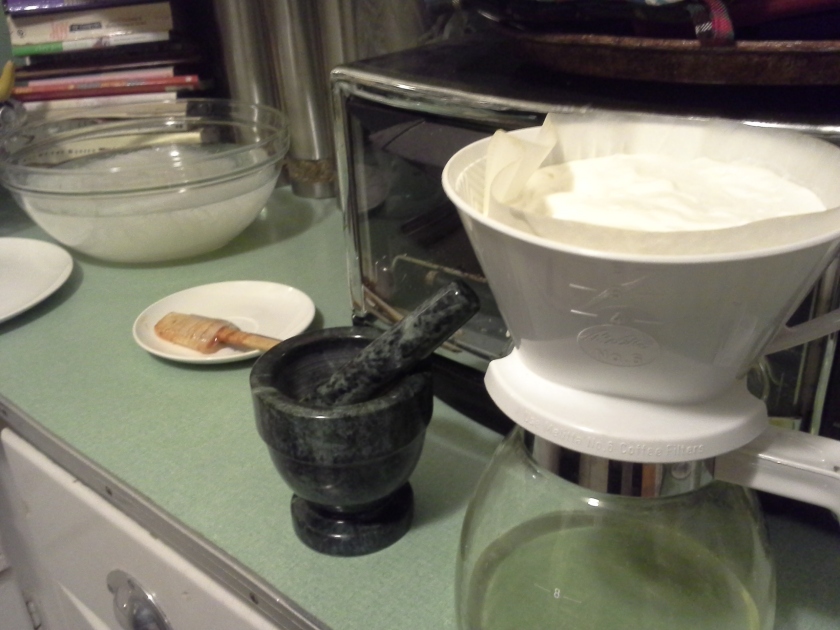
Body moisture: it’s your worst enemy when dressing for winter cold. You can be wind-proofed and layered to excess. But if your layers aren’t venting that moisture, the minute your body stops radiating heat, the moisture trapped in your clothing will chill you like a Perdue chicken.
My first winter riding around Madison, I used to either underdress and regret having ever left the house, or I’d over dress, get damp with perspiration, and experience bone-chilling, near-hypothermic misery. Now, after three winters in Madison, I’ve got my layering systems down to a science. I’ve kept notes in increments of 1° or 2°F, from 40° down to -1° F, both for cycling and walking. (See below.)
I’ve also filled out my wardrobe of base layers, mid-layers, and technical garments. I prefer Patagonia’s synthetic products. They insulate and vent moisture as well as anything out there. As a bonus, many of their products are made from recycled plastic bottles.
Just a few things to emphasize before presenting my layering systems.
I pay little attention to my legs. While I do wear a wool insulating layer under my jeans or cords, I leave my legs exposed enough to prevent them from perspiring. Why? Because I don’t own any high quality pants that are BOTH windproof AND breathable. Wearing lesser quality windproof pants, my legs get sweaty and damp–the last thing I want when it’s cold. Pants made from Gore-Tex Pro are very expensive. I do own a Gore-Tex Pro jacket ($600), as venting the body core and arms is much more important than the legs. Plus, I bike 95% of my trips around town (no car!), and on my bike my legs pretty much take care of themselves in the warmth department.
However, crotch warmth needs to be accounted for. (Duh!) In conditions of bitter cold (5° F, or lower), I’ll stuff a pair of glove liners down my crotch, and we’re good!
The head is easy. Above 20° F, I wear my aero-helmet with a headband and cycling glasses. Below 20° F, I stay warm in a snowboard helmet. I switch to ski goggles below 12° F or when it’s windy. The key to snow-helmet comfort is a venting system, one which can be opened or closed on-the-fly. The head generates serious BTUs of heat, so when the air is in the upper-teens, or when pedaling hard, opening the vents keeps one from overheating.
One last thing to note. I avoid windproof insulation under my hardshell. Windproof fleece, such as Patagonia R4 or soft shells with a Gore-Tex layer, work really well as outerwear; they’re my go-to outer layers in milder weather (>30° F). But when worn as an insulating layer, they don’t breathe well. The consequence: trapped moisture close to the body.
Below, I’ve condensed my notes (layers for cycling), in increments of approximately 5°. The notes specify weather conditions, time of day, and the success/failure of the layers listed. What’s not specified is the type of cycling: running errands around town, i.e., bicycle trips of 15 to 25 minutes.
Message me or leave a comment if you want the full version (or if you’d like my notes for walking/hiking, instead).
Abbreviations
“Cap” = Capilene (Patagonia)
“Cap 3 crew” = long sleeve crew-neck
“Alpine Jacket” = Patagonia Super Alpine Jacket
“Gore Softshell” = Gore Bike Windproof Softshell
“Hi-loft” = either Patagonia R3 jacket or North Face Radium jacket
35-deg, 11pm, 8mph wind
— perfectly layered, home from High Noon Saloon
Cap1 stretch SS
Cap1 stretch LS
wool LS crew
Cap4 Full Zip
Gore Bike softshell
Capilene scarf, took this off 1/2-way home
wool leggings + jeans
glacier gloves w/ med. liners
Keen hiking boots, Smartwool socks
29 – 30 deg, 12 pm, 9 mph wind
— a bit over-dressed to Co-op; the backpack added warmth
Note: started out the ride with good warmth built up
lighter wool leggings + cords
Capilene 2 LS (this should’ve been a Cap 1, and the Cap 4 could’ve
Cap 4 1/4-zip been Cap 3)
Alpine jacket (possibly could’ve been softshell)
med-weight balaclava (allowed you to leave jacket 1/2-zipped)
lobster gloves + best liners
Keen hiking boots, wool socks
aero helmet + headband, glasses
backpack
30 – 26 deg, 7 – 8 pm, 13 mph wind
— ears/jaws got cold on way home, to Co-op
Note: started out the ride with good warmth built up
lighter wool leggings + cords
Two-layer insulation
Capilene 1 SS (torso was perfect)
Cap 4 1/4-zip
Gore softshell
(would’ve been nice to have mid-weight balaclava for ride home at 26 deg)
lobster gloves + best liners
Keen hiking boots, wool socks
aero helmet + light-weight headband, glasses
backpack
25 deg, 5pm, 5 mph wind, 96% hum.
— just right to State Street, then to Co-op
— was a bit chilly when you had your Cap 4 part-way unzipped
lighter wool leggings + cords
cotton TCap 4 full-zip
Alpine Jacket
lobster gloves + best liners
Keen hiking boots, wool socks
aero helmet, headband
glasses
backpack
22 – 19 deg @ 3 – 5 pm, 13 mph wind
— to State St. (overheated on the way out!! Just right on way home.)
wool leggings + jeans
cotton SS
Smartwool top
North Face Hi-loft fleece
Alpine jacket
lobster gloves, windproof cyc. gloves
wool socks
Keen hiking boots
aero helmet w/ headband
Campy balaclava
17 – 20 deg, 7 – 8 pm, 14 mph wind
— to Co-op (maybe also to Trader Joe’s)
wool leggings + cords
Silk weight Cap SS
Cap2 crew [should’ve deleted this]
Cap4 Full Zip
Alpine hardshell
lobster gloves w/ liners (hands totally fine!)
snowboard helmet (Note: no headband — just tightened chin strap)
Keen hiking boots, Smartwool socks [toes a bit cold when riding hard]
(carried in bag: Capilene scarf, 2nd pr. glove liners, balaclava)
30 – 16 deg, 5 – 8 pm, 9 mph wind
— to Mason Lounge
Note:
lighter wool leggings + cords
Cap 1 SS
Cap 2 1/4-zip[carried Cap 4 full-zip for ride home]
Alpine jacket
med-weight balaclava
lobster gloves + best liners
Keen hiking boots, wool socks, light wool socks
snowboard helmet + glasses
14 deg, 6 pm, 9 mph wind
— to State St. then to Absolutely Art
— torso was too warm; removing the Cap 2 crew was good;
wool leggings + cords
Cap 1 stretch SS (this should’ve been LS, and no Cap 2 layer)
Cap 2 crew [took this off!!]
Cap 4 Full Zip
Alpine hardshell
ski gloves w/ windproof cyc. gloves + liners (hands good until very end)
snowboard helmet
Campy balaclava
Keen hiking boots, Smartwool socks + wool footies
— (feet good until way home from Jenifer St. Mkt.)
(carried in bag: Capilene scarf, 2nd pr. glove liners)
14 – 11 deg, 2 – 4 pm, 4 mph wind
— to Manona Terrace then to Jennifer St. Mkt.
— torso a bit too warm to Manona Terrace; legs/feet/hands perfect
— hands & feet freezing on way home from Jenifer St. Mkt.(probably b/c boots & gloves were a bit damp inside
— should’ve taken gloves off when browsing in stores)
wool leggings + cords
Cap 1 stretch SS
Cap 3 crew
Cap 4 Full Zip
Alpine hardshell
lobster gloves w/ windproof cyc. gloves (should’ve added liners later) snowboard helmet
Keen hiking boots, wool-blend socks (that’s all you had clean)
(carried in bag: Capilene scarf, 2nd pr. glove liners)
10 – 9 deg., 12-1p, 9 mph wind
— too warm!
lighter wool leggings + jeans
Cap 1 stretch SS
Cap 3 crew [had to remove this; should’ve been Cap 1 LS, could’ve rolled sleeves]
Cap 4 Full Zip
Alpine Jacket
heavier balaclava (Gore)
lobster gloves w/ best liners & light liners
Keen insulated boots, wool socks
snowboard helmet
Anon goggles
backpack
6 deg., 3p, 7 mph wind
— just right!
— to Co-op
Cap 1 stretch SS
Cap 2 quarter-zip
Hi-loft Full Zip (North Face)
Alpine Jacket
heavier balaclava (Gore)
lobster gloves w/ best liners and windproof cyc. gloves
Keen insulated boots, wool socks
snowboard helmet
Anon goggles
backpack
5 deg., 7p, 5 mph wind
— over-warm (had excess body-warmth built up + backpack, espec. on way home when backpack was heavy)
— to Co-op
>>>Next time, whenever you’ve got excess body-warmth built up, downgrade the Hi-loft layer to Cap 4
wool leggings + cords
silkweight Cap SS [could’ve deleted this b/c of the backpack]
Cap 3 quarter-zip
Hi-loft Full Zip (North Face) [Or, this could’ve been Cap 4
Alpine Jacket
— unzipped 1/4
— body a little too warm b/c of the backpack
heavier balaclava (Gore)
ski gloves w/ best liners and light liners
— hands were fine
Keen hiking boots, wool socks, lightweight wool socks
— feet perfectly fine
snowboard helmet (no headband)
Anon goggles
backpack
15 – 4 deg., 5p – 11p, 5 mph wind
— just right
— to Square to get bus to Greg’s; ride home from Greg’s
two silkweight Cap SS
Cap 4 full-zip
Hi-loft Full Zip (North Face)
Alpine Jacket
[most everything was comfortable, except my crotch!! Nearly frost bit. Should’ve stuffed lightweight glove liners down there.]
heavier balaclava (Gore)
lobster gloves w/ best liners and windproof cyc. gloves
— hands were fine (surprisingly! You were riding pretty hard the whole way home)
Keen insulated boots, heaviest wool socks
— feet perfectly fine
snowboard helmet (no headband)
Anon goggles
backpack
1 – 4 deg., 1 – 2p, 13 mph wind
— just right to doctors appt.
Cap 1 SSCap 1 LS (a bit too warm; rolled up sleeves on way home and was perfect)
Cap 4 full-zip
Hi-loft Full Zip (North Face)
Alpine Jacketcrotch: glove liners!!
heavier balaclava (Gore)
lobster gloves w/ best liners and windproof cyc. gloves
— hands were fine!
Keen insulated boots, wool socks
— feet perfectly fine
snowboard helmet
Anon goggles
backpack
-1 deg., 7p, 12 mph wind
— to Old Fashioned
lighter wool leggings + cords
Cap 1 stretch SS
Cap 3 1/4 zip
Hi-loft Full Zip (North Face)
Alpine Jacket
heavier balaclava (Gore)
lobster gloves w/ two pr. liners
Keen insulated boots, heavy duty wool socks
snowboard helmet (no headband)
Anon goggles






